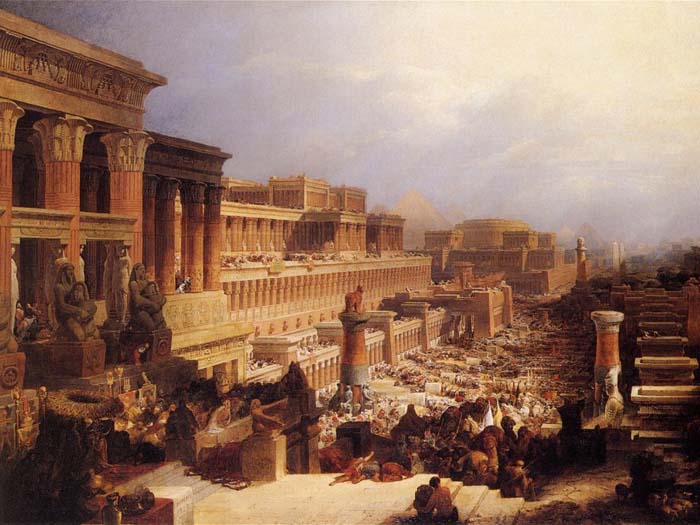Even though the story of the Exodus out of ancient Egypt is the Torah’s basis for creation, there is no real archaeological evidence in support of it. The main issue is that with the sheer number of people migrating from one place to another, there should be some recording of it available. Some researchers believe that the actual number of people involved in the Exodus was far fewer than originally suspected. This would make the migration less of an impact on history.
Another issue is the parting of the Red Sea. Although it’s possible that a tsunami caused the waters to recede, it is still unlikely to have happened because the eventual giant wave would have drowned anyone in its way. Unfortunately, no real archaeological evidence exists for the Exodus.
The 10 Plagues of Egypt
Moses told the Pharaoh of Egypt that God wanted him to set the slaves Israelites free. If he didn’t comply, he was warned, God would strike Egypt with 10 plagues. According to the story of Exodus, Egypt was struck with every one of these plagues:
- The Nile River turned to blood
- The arrival of thousands of frogs
- A plague of lice
- Swarms of flies
- Diseased cattle and other livestock
- Boils on people’s skin
- Heavy hail that turned to fire when it landed
- A plague of locusts
- Darkness for three entire days
- Death of the first-born son, which included the house of the pharaoh
Click here to learn more about the 10 plagues

The Israelites Leaving Egypt, oil on canvas, by David Roberts
Other Theories about the Exodus
- Josephus, a first century historian, believed that the exodus was actually the migration of the Hyksos from ancient Egypt. This theory has merit because a stele by pharaoh Ahmose I depicts dramatic storms, which would correspond nicely to the plagues that supposedly ravaged Egypt during the time of the exodus of the Israelites.
- Some believe that the pharaoh Akhenaten was the actual Moses. This is because Akhenaten was the first Egyptian Pharaoh to believe in one god (monotheism) and Moses was also monotheistic, living around the same time period.
- The Exodus story may have been “copied” from the Egyptian myth of Osiris and Isis. To prove the Israelites’ faith and their existence as the chosen people, they may have adopted the myth of Osiris and Isis in their own words with their own people.
Facts about the Exodus in Ancient Egypt
- The identity of the pharaoh during the Exodus is still undetermined. There are cases for Ahmose I, Akhenaten, Ramses I, Tuthmosis III or Hatshepsut, or Seti II.
- Two cities mentioned in the Exodus, Pithom and Ramesses never existed at the same time.
- The Exodus is remembered every year during the feast of Passover.
- To avoid having their first-born son killed, people were told to place the blood of a lamb on their doorstep. When the angel of death saw this offering, he would “pass over” the house and spare the child, and go on to the next. This was the Passover.
- The Israelites first went to Egypt in search of food because of a famine in their country.
- It wasn’t until the implementation of the last plague (the killing of all first born males) that the pharaoh decided to let the Israelite slaves go free.





































